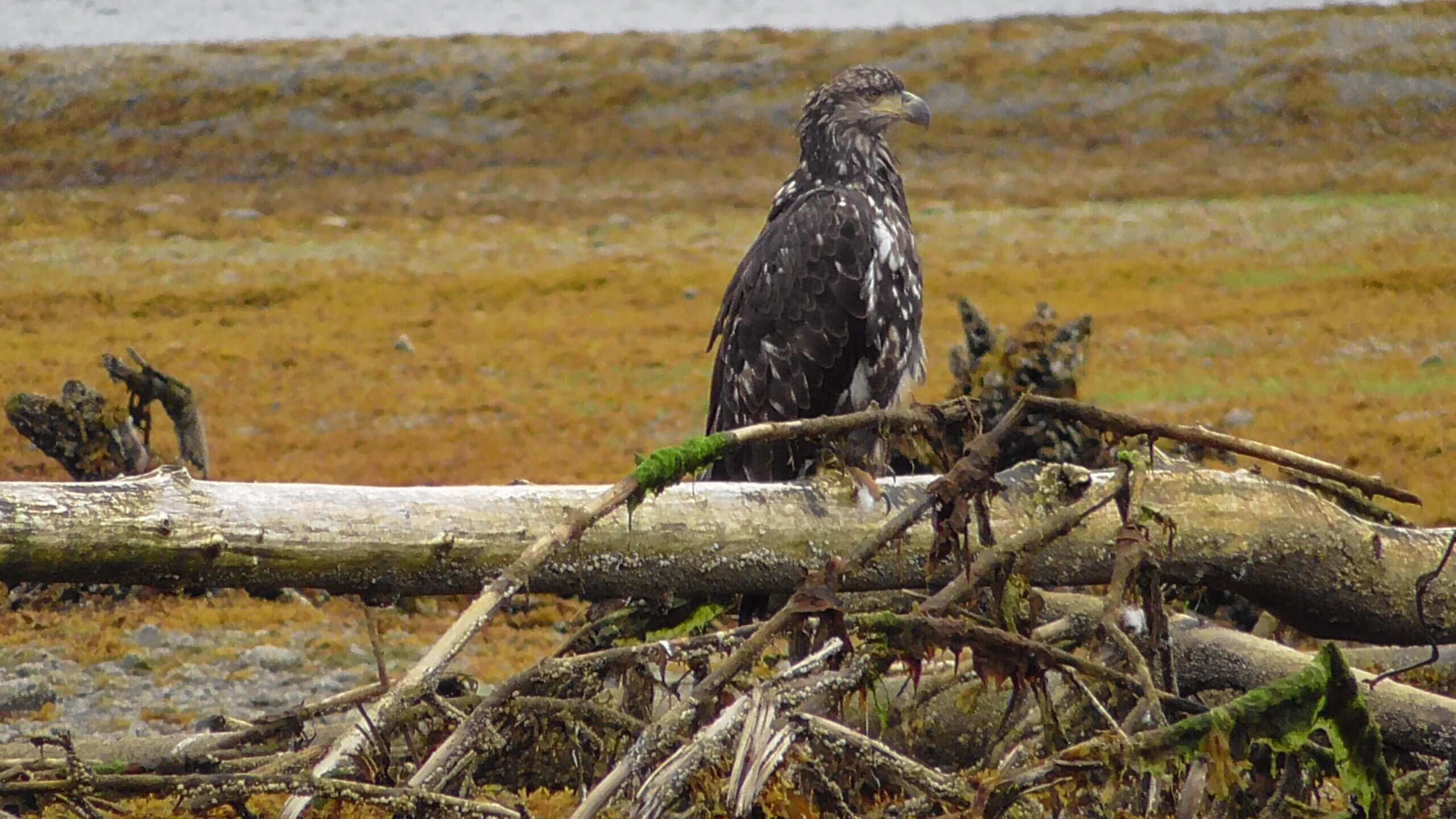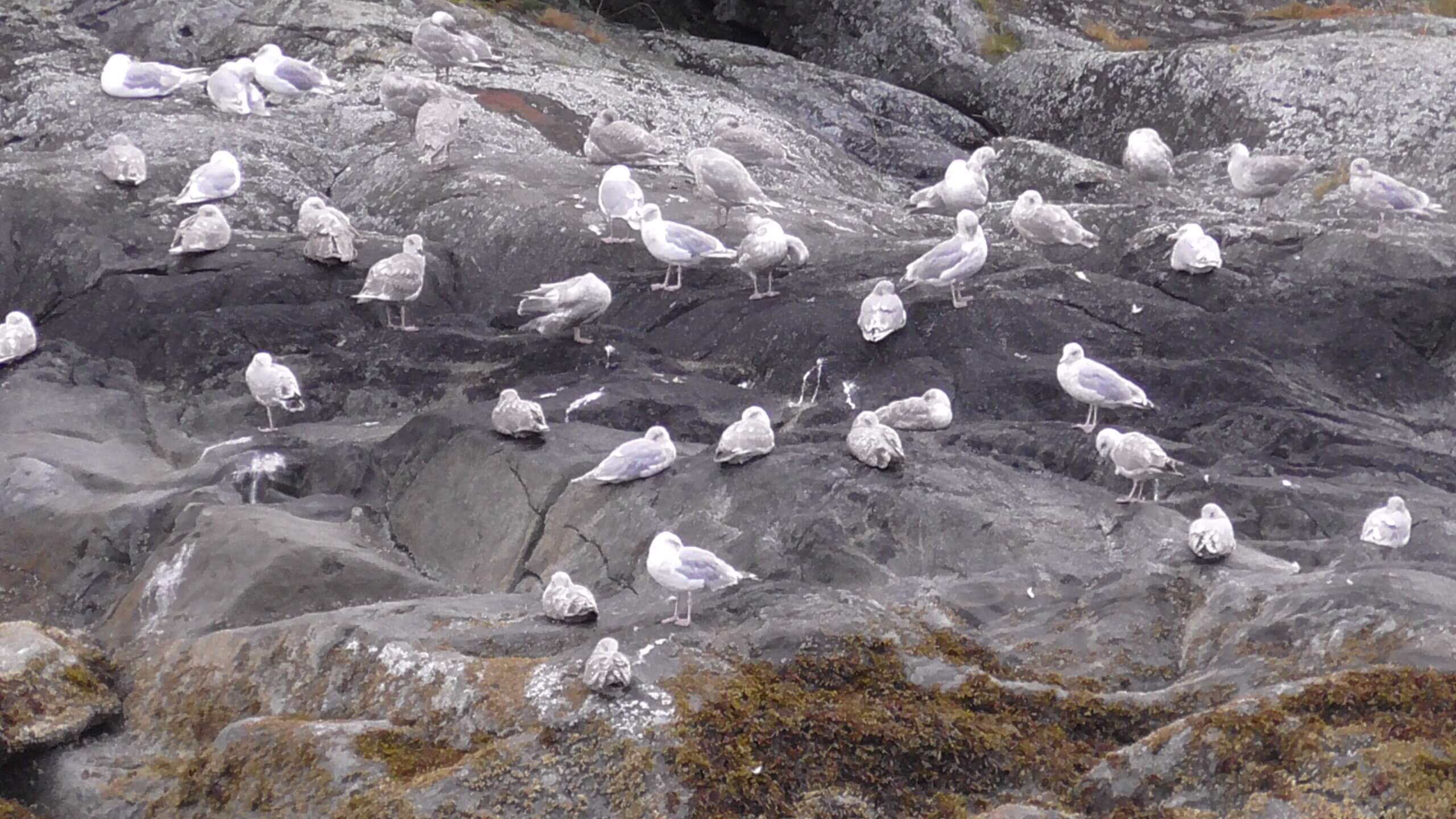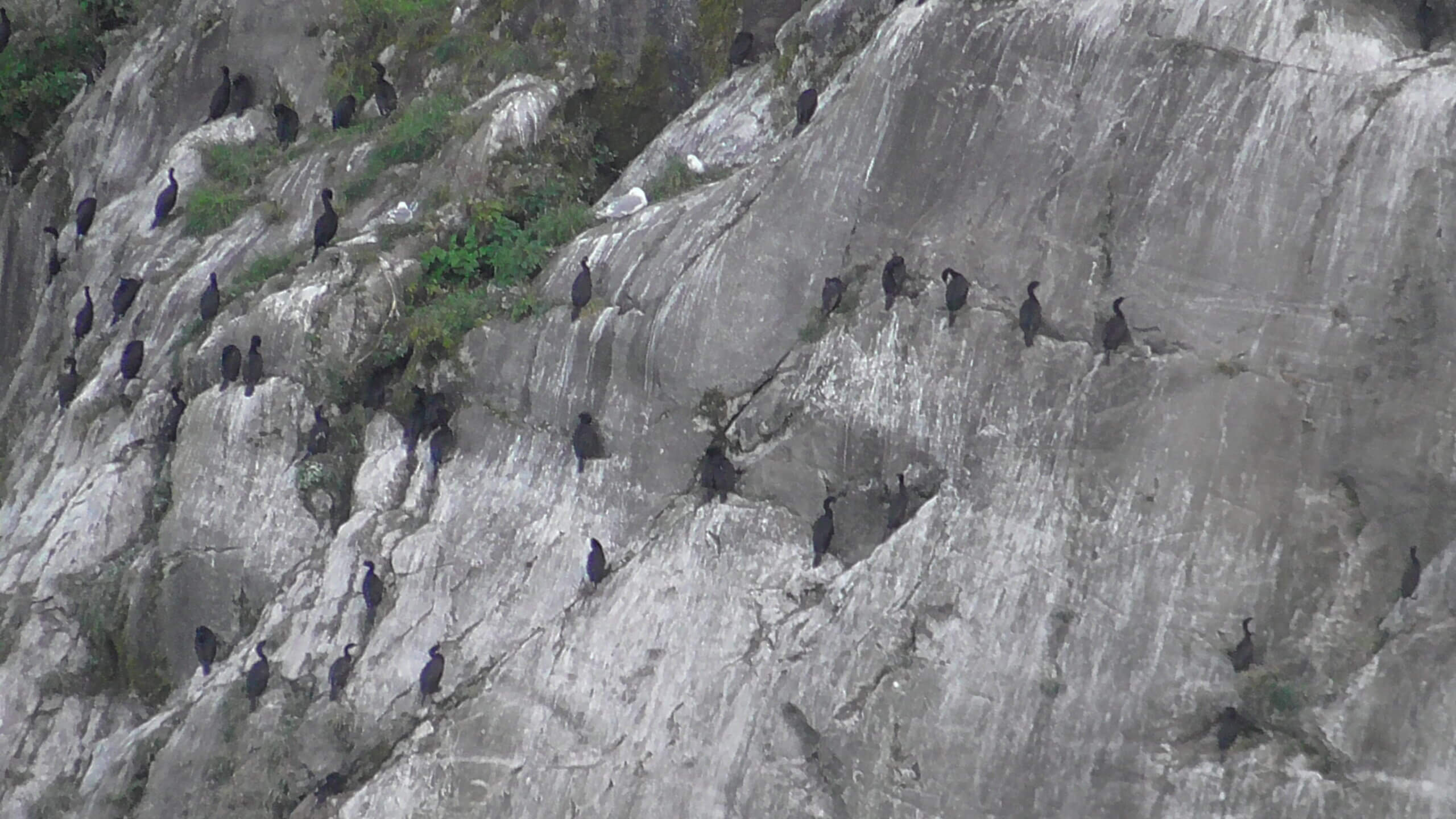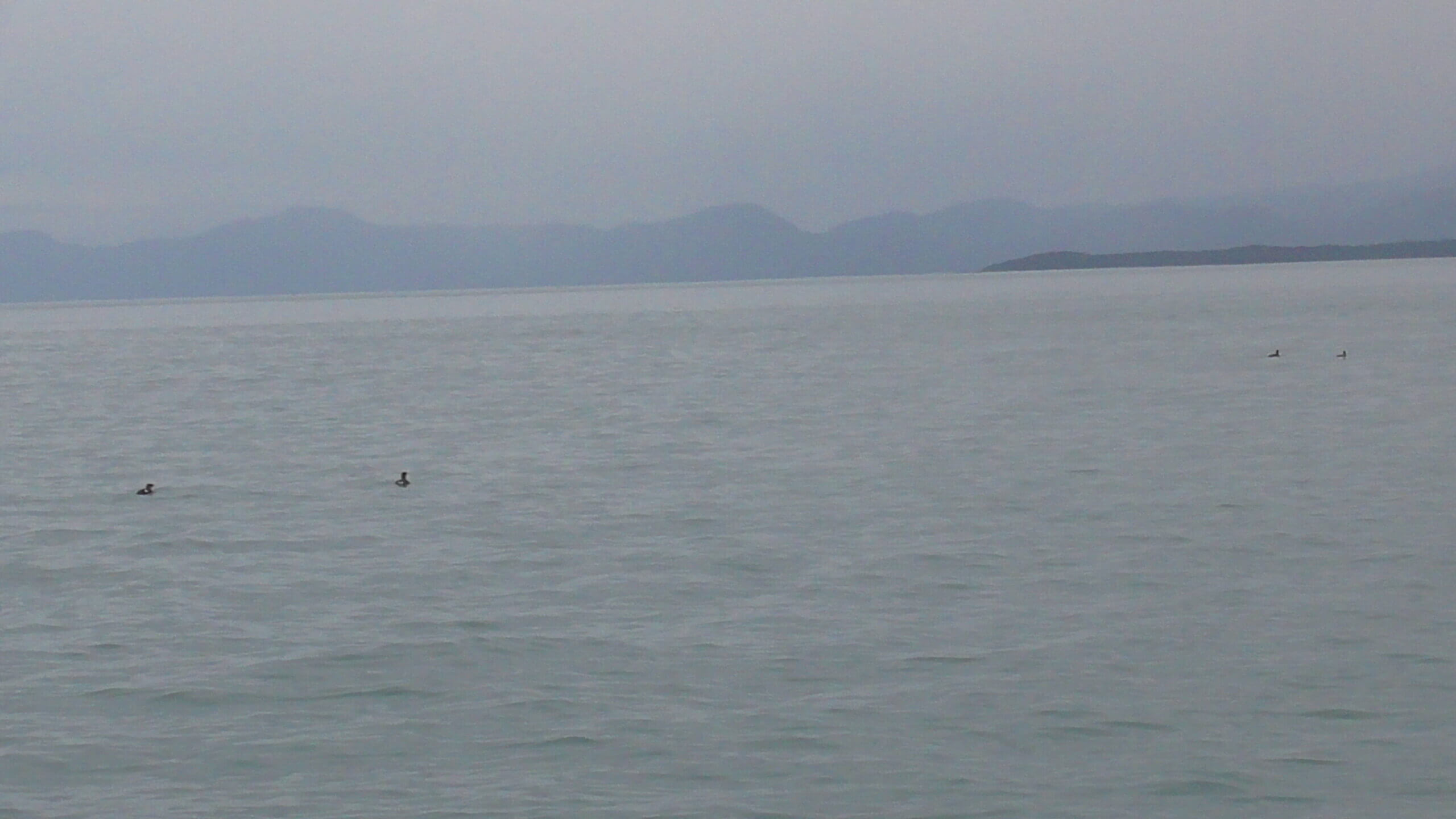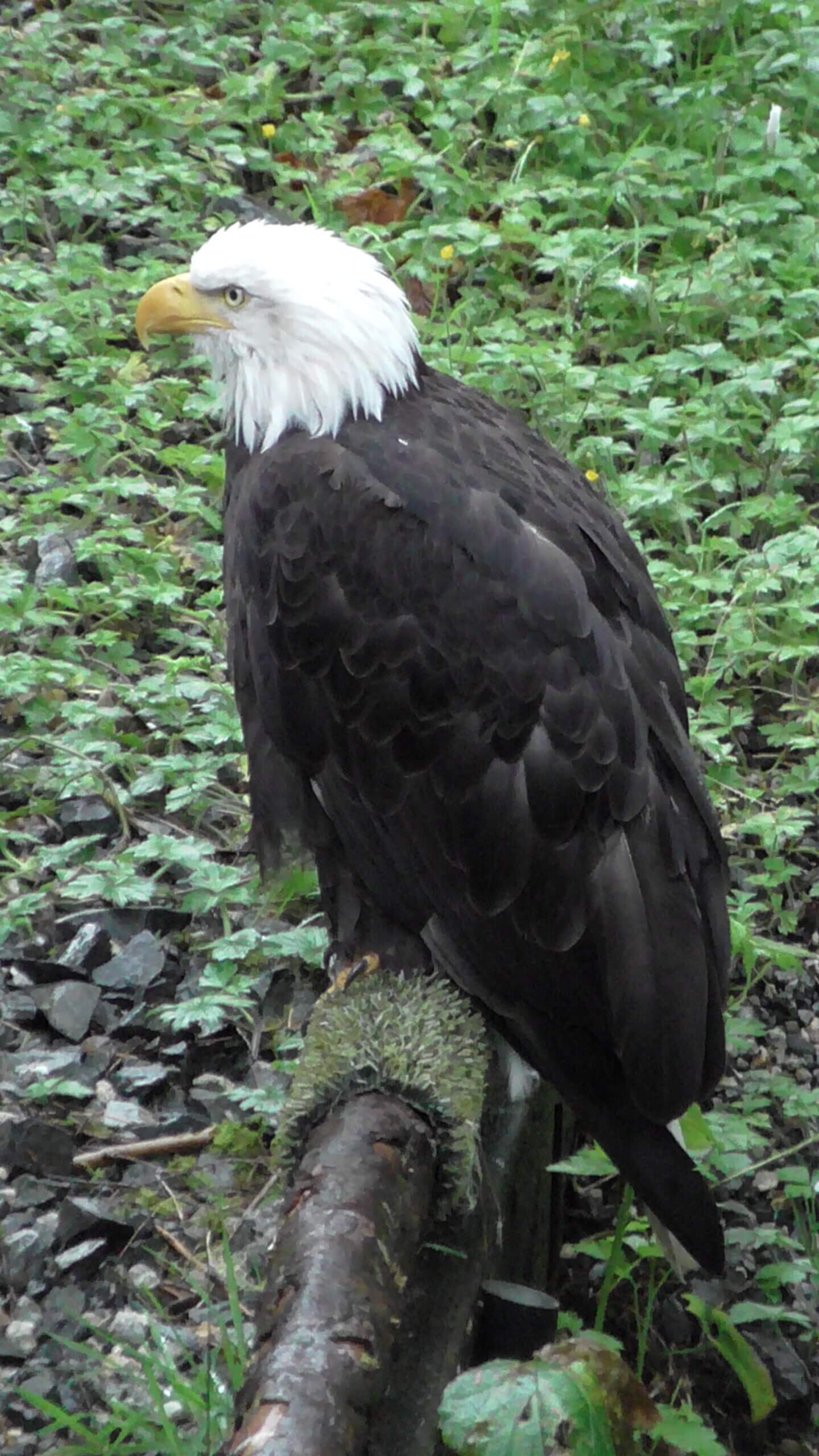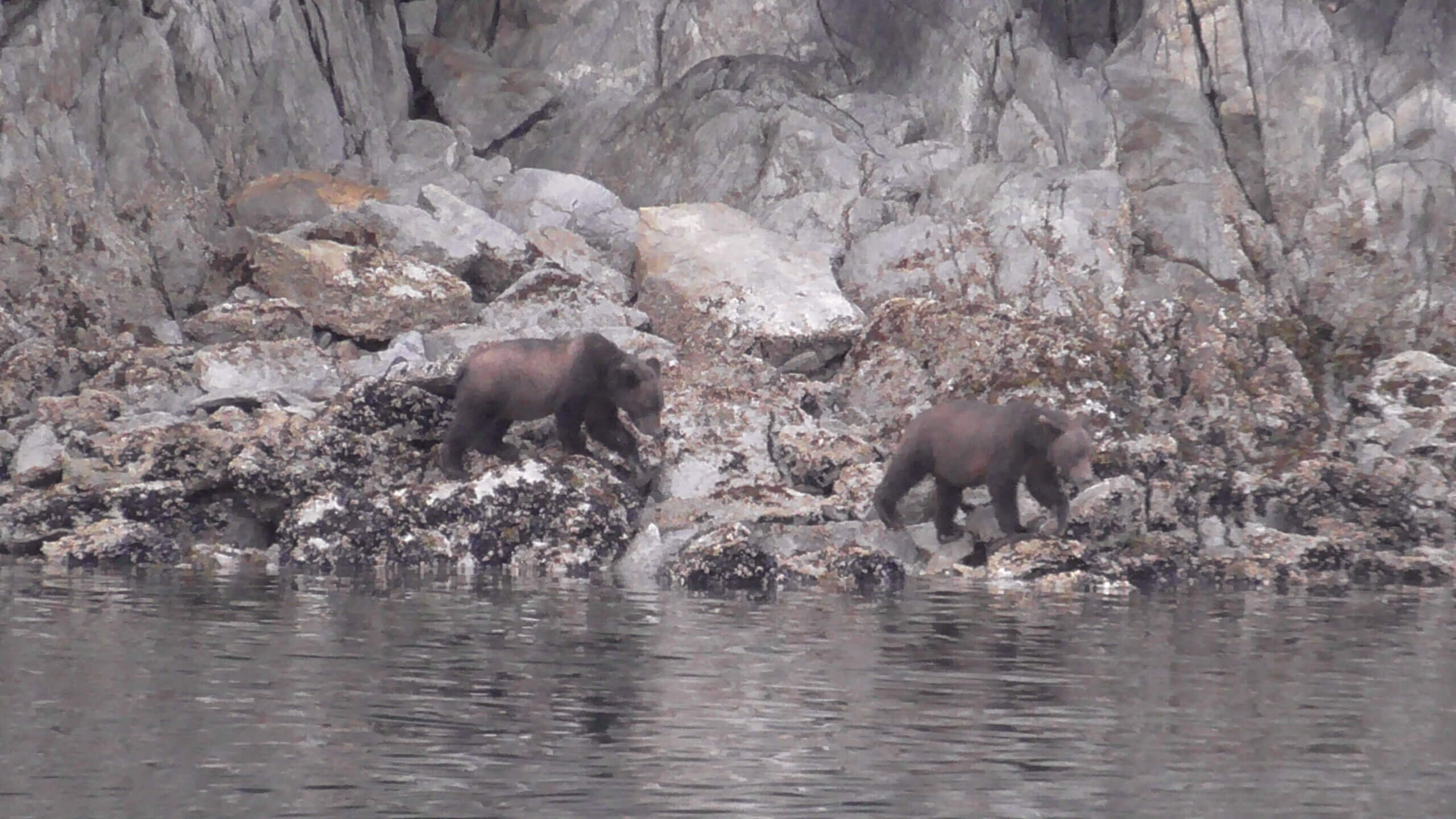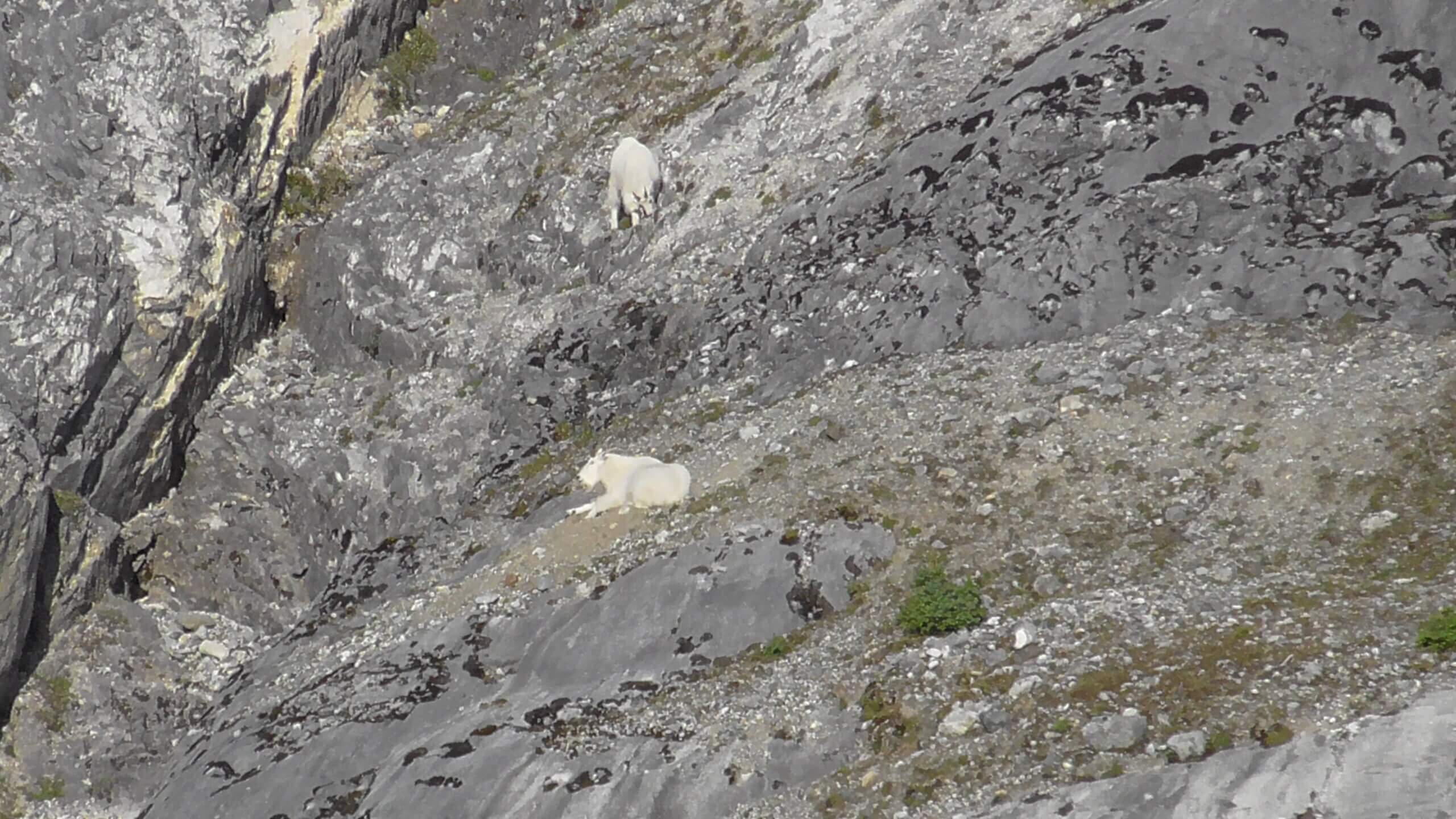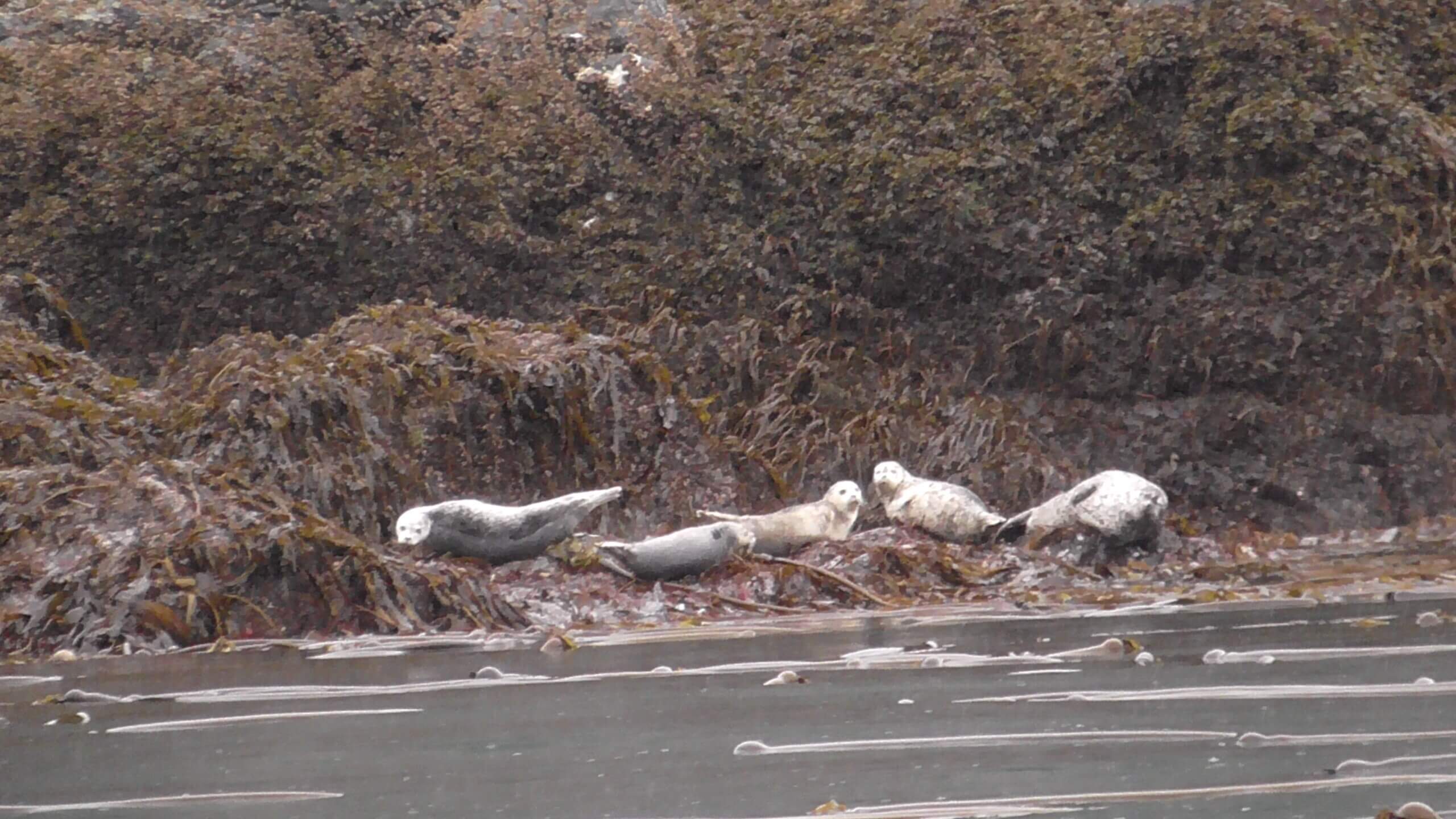The archipelago is highly biologically productive. The bulk of the marine productivity is driven by countless billions of phytoplankton (tiny plant-like creatures too small to be seen with the naked eye) in the ocean. Glacier Bay supports incredibly dense populations of phytoplankton that last throughout the spring, summer, and fall. These microalgae float suspended in a shallow band of water mainly in the Middle Bay where sunlight can penetrate. Abundant nutrients for the phytoplankton come from at least two sources: 1) Rainfall and glacial activity leaching minerals from the soil and 2) salmon growing in the open ocean for 5 years and adding nutrients when they return and die. As predators like bears and eagles eat salmon, the forests also benefit from these nutrients by the process of elimination. Sea grass (eelgrass) and macroalgae (kelp, rock weed, etc.) also benefit from these nutrients and add to the primary productivity.
Birds
Humpback whales may consume several different small preys such as squid, krill, herring, pollock, haddock, mackerel, capelin, salmon, and various other fish. Orcas swim in groups called pods where local pods eat fish and transient pods eat mammals (seals, sea otters, etc.) Sea otters eat a wide variety of prey, including marine invertebrates such as echinoderms (sea stars and sea urchins), crustaceans (e.g., crabs), cephalopods (e.g., squid), bivalves (clams, mussels, abalone), gastropods (snails), and chitons. Sea lions are carnivores that eat hake, squid, crabs, octopus and clams. Adult harbor seals eat squid, crustaceans, molluscs, and a variety of fish; including, rockfish, herring, flounder, salmon, hake, and sand lance. This area may have been a refugia during the ice age. Differences in mtDNA sequences suggest that living brown bears of the Alexander Archipelago comprise a distinct clade and are more closely related to polar bears than to their mainland conspecifics.
Mammals
